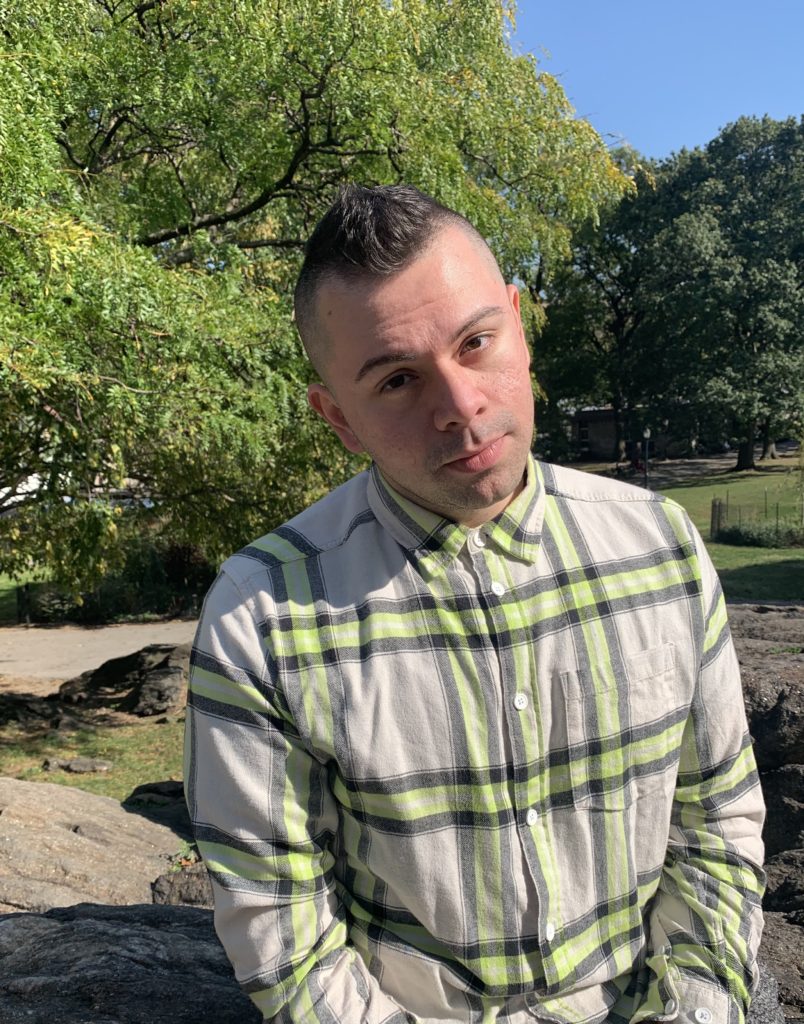We are so honoured that Marcos agreed to judge our CNF contest this year, they also took some time to answer a few questions from our Promotions Editor Ali Barnett.
You can enter our CNF contest and read the rules right here:
https://prisminternational.submittable.com/submit
Marcos Gonsalez is a queer Mexican Puerto Rican memoirist, essayist, and assistant professor of literature. Their debut blended memoir, Pedro’s Theory, published in 2021, has been reviewed by The New York Times and Kirkus. Gonsalez’s essays can be found at Literary Hub, New Inquiry, Catapult, Black Warrior Review, Los Angeles Review of Books, Ploughshares, Public Books, and elsewhere. Their scholarly and creative work centers on queer of color anti-colonial imagining and sensibility, speculative poetics, and autotheory. They live in New York City and can be found on Twitter at: MarcosSGonsalez.

OK, Interview time!
Ali: Your prologue. I loved it. Prologues can be tedious, but yours does so much work. It shows the reader that theory is going to be a major navigator in this book. I appreciate how you mixed theory with personal experience; the reader learns about theory and the real world simultaneously. What guided this mix of theory and personal? Were you hesitant to include a prologue?
Marcos: Prologues are like a compass. I appreciate how they guide us into a book, and how it is reader-oriented. Prologues feel like a kindness to the reader, really, that welcoming into these pages. I like that idea of prologue as a welcoming. The prologue was pivotal for me in that welcoming sense for guiding the reader into Pedro’s Theory. I wanted the reader to know this book is personal, theoretical, critical, speculative, and imaginative. That all these different modes of writing would come together to tell my story. It sets the pace for the experience to come. Especially for creative nonfiction that blends these different writing styles, something like a prologue is a gesture of generosity extended to both reader and writer. That it guides the reader in, and acknowledges the difficult labor done by the writer of bringing these different modes together.
Ali: Your writing works to reveal the complexity of your life experiences. It truly pushes the binaries we are immersed in and questions politics, sexuality, and body image. You use pop culture and literature to reveal connections. How did you choose, for instance, Pedro from Napoleon Dynamite or Lana Del Rey? (Amazing chapter by the way)
Marcos: I chose the various films, icons, texts, and other cultural objects primarily because they shaped the experience I was recounting. They either played apart of my childhood or young adult years, therefore helping ground the story I was building around those years, or they still are important to me today as an adult, and are necessary interlocutors for my own creative and critical process. For all my writing, it is always crucial to bring in these other voices and objects. They orient how I move on the page, and help expand the ideas and story possibilities.
Ali: You use everyday objects to tell us about life, to answer questions about who you are/who your family is. The canvas section blew my mind. For writers who are relatively new to Creative Non-Fiction, do you have any advice on how to choose those landmarks that tie a collection/chapter together?
Marcos: For a collection, you want to identify different objects, events, or texts that gravitate around the story you are trying to tell. So, if you are writing a book on your teenage years, what were resonate objects, events, or texts that stood out for you during that time? Which do you recall vividly, or which tug at you? Then try to free-write around them: describing scenes, narrating stories related to them, researching the history or cultural relevance related to an object or text. From these writings, you want to start to determine what themes and ideas emerge from the various objects, events, and texts. What threads connect them? You have to see how the different, and sometimes disparate and random seeming, parts that encompass a creative nonfiction book cohere. This process is like assembling a scrapbook. You are going to insert and take out, cut and modify, rearrange and reconceptualize, and, ultimately, end up with something beautifully pieced together.
Big thanks to Marcos for taking time to quench my curiousities.
Also a shout out to my UBC CNF Professor Jenny Ferguson who introduced me to Pedro’s Journey. She’s kind of a big deal (Métis, an activist, a feminist, an auntie, and an accomplice with a PhD. Border Markers, her collection of linked flash fiction narratives, was published by NeWest Press in 2016. She is the CNF and à la carte blog editor at carte blanche.) <3<3<3
Don’t forget we have free entries for Black and Indigenous writers on our submittable page and low-income folks can contact me (Ali Barnett) at promotions@prismmagazine.ca for a limited number of free entries.
xo PRISM International